Apis
Apis: the divine bull of the Egyptian capital Memphis, a manifestation of the god Ptah.
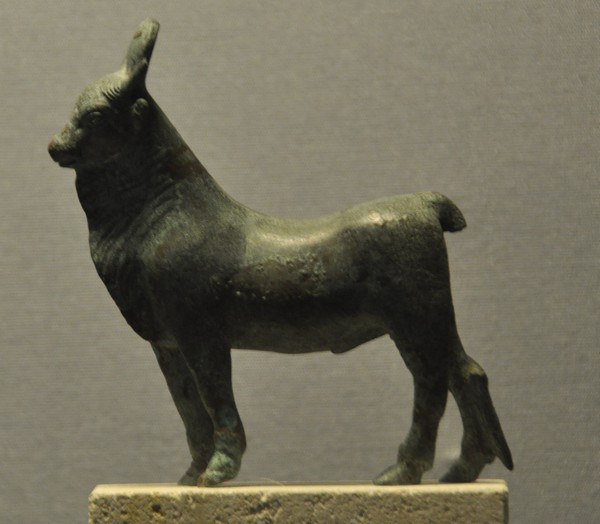
Already in the most ancient times, the Egyptians venerated bulls, animals that represented fertility. ("Strong bull" was a common title for creator gods and kings.) Examples are the white Mnevis bull and the Bouchis of Hermonthis, which was also white but had a black head. The Apis is described by the Greek researcher Herodotus of Halicarnassus:
The Apis is the calf of a cow which is never afterwards able to have another. The Egyptian belief is that a flash of light descends upon the cow from heaven, and this causes her to conceive Apis. The Apis-calf has distinctive marks: it is black, with a white square on its forehead, the image of an eagle on its back, the hair on its tail double, and a scarab under its tongue.note
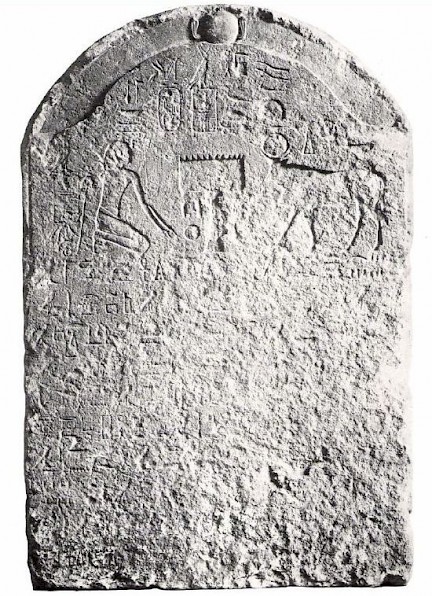
The animal was venerated in Memphis, where a special shrine was built. It sometimes served as an oracle.
[Pharaoh] Psammetichus built the southern gateway of the temple of Ptah at Memphis, and opposite it a court for Apis [...]. Apis is kept in this court whenever he appears; it has a colonnade round it, with statues six meters high instead of pillars, and is richly carved with figures.note
The Apis was considered to be a manifestation of the Memphite creation god Ptah; it was the "soul (Ba) of Ptah" and "herald (whm) of Ptah". The bull was therefore a kind of servant, who was himself divine. Sometimes, the animal was shown to the populace; during this procession, its walk was considered to be the blessing of the country.
When the Apis died, it was buried in a necropolis at Saqqara. The oldest known burial dates back to Amenophis III (r,1391-1353). The died bull had become identical to the god of the Underworld, Osiris. Therefore, he was known as Osiris-Apis. During the reign of the Ptolemaic kings (r.323-30 BCE), the god Osirapis or Serapis became the most important god of Egypt.
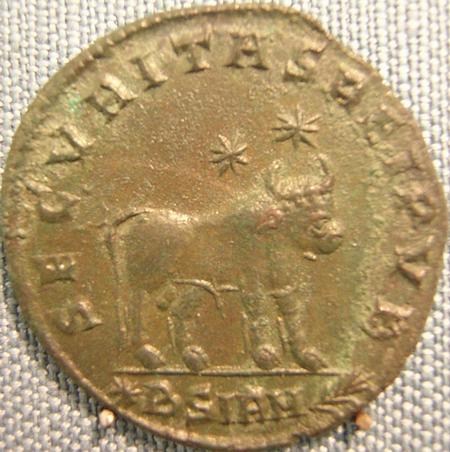
The Apis is usually depicted as a black bull with, between his horns, a sun disk and an uraeus snake. An example can be found on the tomb of the Apis that died in September 524, which shows the Cambyses, the Persian king who had conquered Egypt but behaved like a normal pharaoh, venerating the bull.
The Greeks identified the Apis with their demi-god Epaphus, a son of their supreme god Zeus and his lover Io, who had been transformed into a cow. The cult for Apis still existed in Roman times; the sacred animal was even protected by an official bodyguard, a lictor. However, the worship disappeared when Egypt was christianized, atlhough a very brief revival during the reign of the emperor Julianus Apostata (r.361-363) is likely.
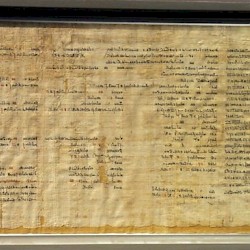 Funerary rites of an Apis |
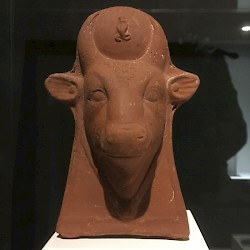 Head of an Apis bull |
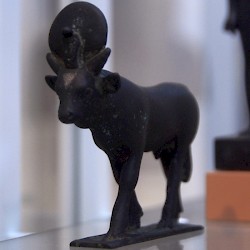 Memphis, statuette of an Apis bull |
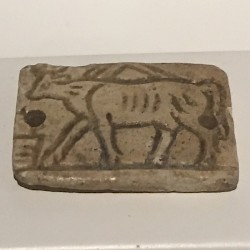 Plaque with a representation of the Apis |